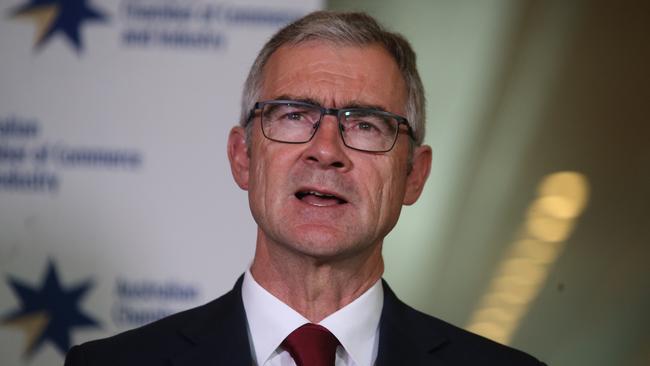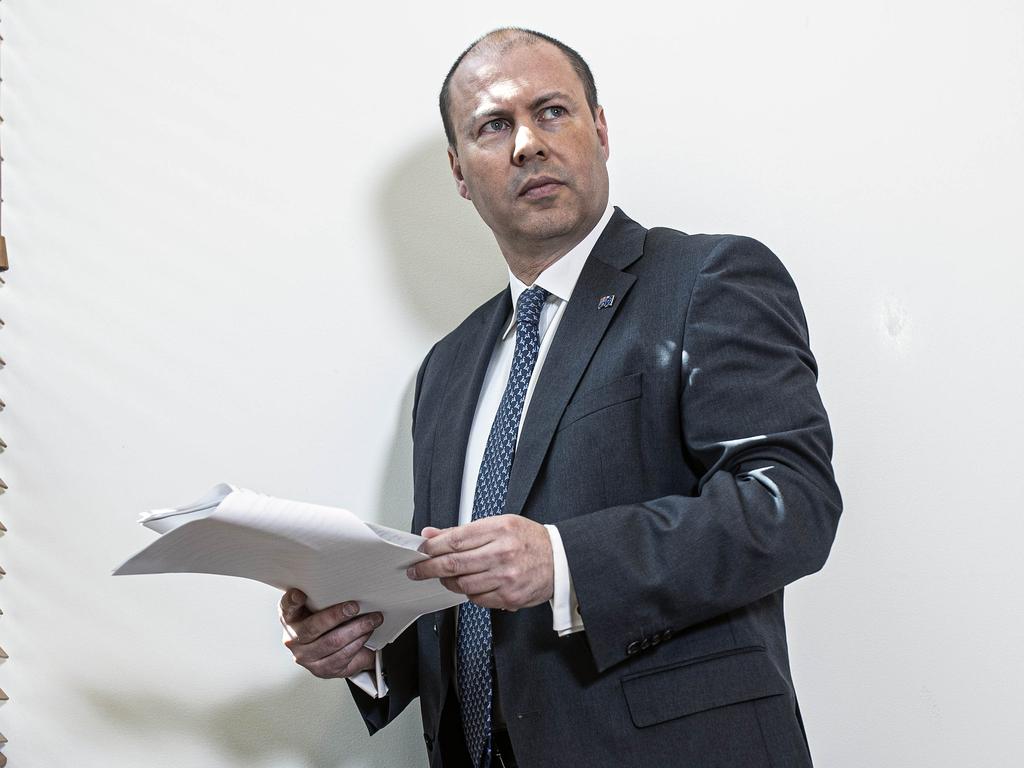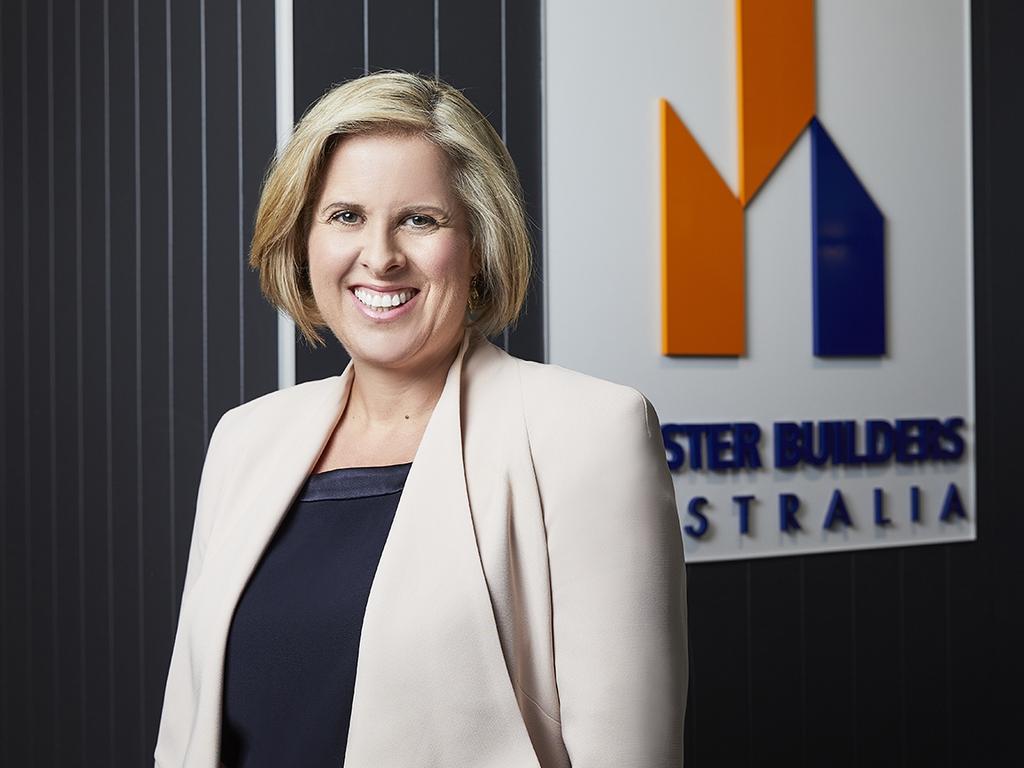Backdate tax cuts now, Treasurer Josh Frydenberg told
Josh Frydenberg is facing calls to backdate personal income tax cuts in the budget to the start of this financial year to help pump-prime the economy through the pandemic.

Josh Frydenberg is facing calls from one of the big four banks and the nation’s leading small business groups to backdate personal income tax cuts in the budget to the start of this financial year to help pump-prime the economy through the COVID-19 pandemic.
Australians on incomes of more than $120,000 are already expecting fast-tracked tax breaks of more than $2000 to be unveiled as part of an acceleration of the second phase of the government’s legislated three-step tax relief plan.
Australian Chamber of Commerce and Industry chief executive James Pearson said it “makes sense” to apply the stage-two tax relief to 2020-21.
“It would mean the benefits for households and unincorporated businesses would come in that much sooner, and that’s the shot in the arm we are looking for to stimulate demand,” Mr Pearson said.
Council of Small Businesses Organisations Australia chief executive Peter Strong also agreed that the faster additional tax relief was provided, the better for business owners and the economic recovery.
“We should make it happen as quickly as possible and get the money out there,” Mr Strong said.
Under the second phase of the government’s personal tax cuts, the biggest beneficiaries are those earning more than $120,000 who are on track to receive an additional $2250 reduction on their tax bill, according to Treasury estimates.

Amid criticism that the acceleration of the tax cuts would do little to boost spending, the Treasurer said on Sunday: “We believe that people should keep more of what they earn, and we also believe more people having more money in their pockets right now will help economic activity across the economy, (and) more spending will mean more jobs.
“We know there is a high savings ratio at the current time, but that has been a reflection of the health restrictions that have been in place. Once those restrictions are eased, more money will be spent.”
Mr Pearson said sole traders would be likely to use the extra tax relief to invest in their businesses.
“The important thing about cutting personal income tax is that it’s not just a benefit for consumers and households, a lot of people in small business are sole traders and they are likely to spend that money on their business,” he said.
Initially slated to come into effect from July 2022, the second stage of tax cuts removes the temporary low and middle income tax offset (LMITO) that is compensated for by a lift in the top threshold of the 19 per cent tax bracket from $37,000 to $45,000.

Crucially for higher earners, under stage two the 37 per cent tax rate threshold will kick in at $120,000 instead of $90,000. As a result, the additional benefits of the stage-two personal income cuts only become apparent for taxpayers earning $100,000 — who save an extra $750 off their tax bill — and more meaningfully at incomes of $120,000, who will pay $2250 less a year in tax versus the stage-one measures.
Westpac chief economist Bill Evans believes the stage-two cuts could be made effective from the start of this financial year, arguing that the backdating of the relief would provide the immediate boost the economy required.
Mr Evans said the more substantive stage-three cuts — which will result in 94 per cent of income earners paying a marginal tax rate of no more than 30 per cent — should be brought forward three years and start from July 2021.
The director of the ANU’s Tax and Transfer Policy Institute, Bob Breunig, said it was his “strong feeling” that lowering personal income taxes was “going in the right direction”.
The Australian government raises 40 per cent of its revenue from personal income taxes.
Professor Breunig said lowering the country’s over reliance on income taxes was a worthwhile supply-side reform, which he said would need to be complemented by wider reform over the coming year.







